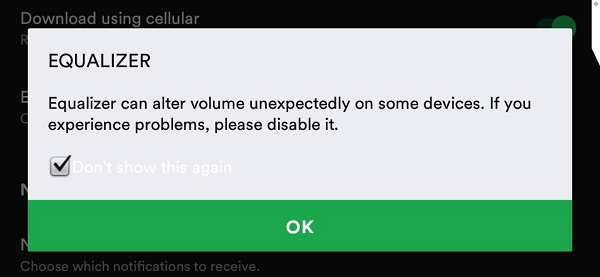

The benefits of being able to select one’s own output device in Spotify or Qobuz really hits home when we consider JPlay 5 (€99), software that installs a virtual output device on your Windows PC. Again, the bonus of being able to select a specific output device means one can sidedstep Windows’ own bit-imperfect digital audio stream and go straight to Directsound, ASIO or WASAPI outputs. Its minimal interface suggests Fidelify’s aim is to function with lesser burden on the host PC’s system resources and therefore making it sound superior to the standard client. Fidelify isn’t a plugin like Equalify but a fully functional client that taps the Spotify API. For now at least, it’s strictly in beta where the usual caveats apply. After a threatening to hit the deadpool last year, development is back on course with an official release imminent. Useful if you want to counteract a room anomaly or if you just enjoy the flexibility of EQ-ing your streaming sound.Īnother (Windows only) app that’s been getting some traction on the margins is Fidelify. The Qobuz application allows the user to specify the desired output device but Spotify doesn’t…so let’s first consider two possible ways around this restriction before we get to the meat of today’s meal.Įqualify (Windows only) might have originally been intended as a 10-band graphic equaliser plug-in for Spotify but its bonus side-effect is being able to select a specific output device from within the application, something that Spotify’s desktop app doesn’t accommodate. The likes of JRiver, JPlay, Amarra, Pure Music and Audirvana+ are well established names for those wanting to enhance the sound of locally stored digital media but what about bringing similar coding smarts to make the likes of Spotify, Qobuz, Pandora and MOG/Beats sound better? With more and more people listening to music via a monthly subscription service comes an opportunity to optimise the sound quality of the associated software applications.
#SPOTIFY EQ FOR MAC SKIN#
Whichever way you skin the scene: digital audio consumption is on the cusp of some BIG changes. However, all that could change in the coming weeks if Apple delivers on its (strongly rumoured) lossless content provision via the iTunes store. Qobuz are the current trend-setters in this field with WiMP pulling up a close second. Why? Lossless streaming services are set to take over. There will always be those who want to grab a physical version of an album – most likely vinyl – or those who want the higher bit- and sample-rates from hi-res content providers like HDTracks and PonoMusic, but owning Redbook (16bit/44.1kHz) content outright is set to slide from mainstream consciousness. For the average Joe, the notion of owning music is slowly on the way out.


 0 kommentar(er)
0 kommentar(er)
